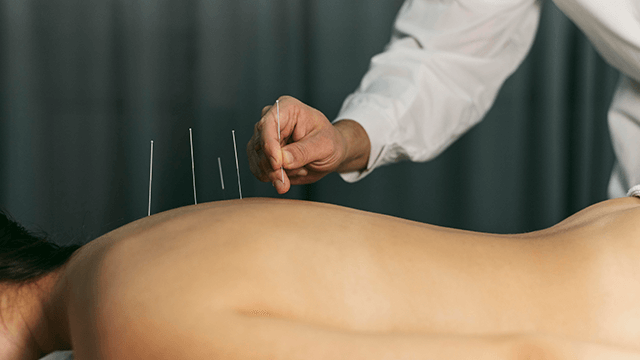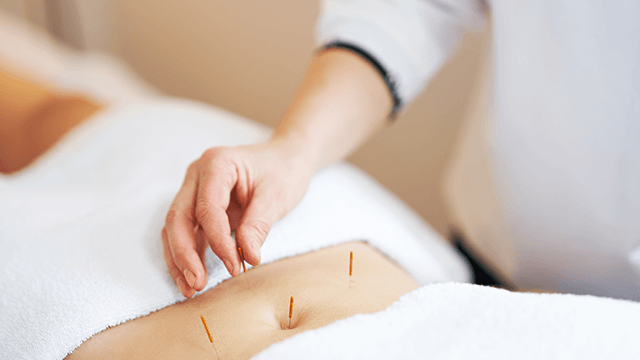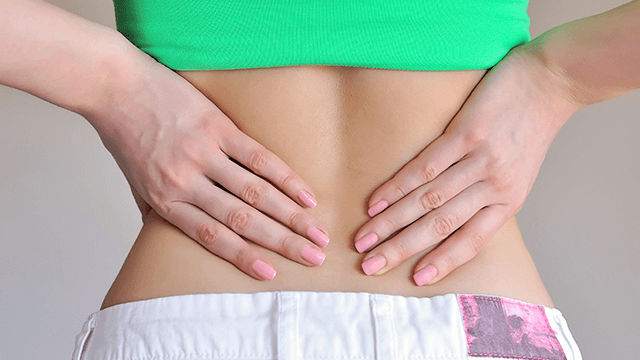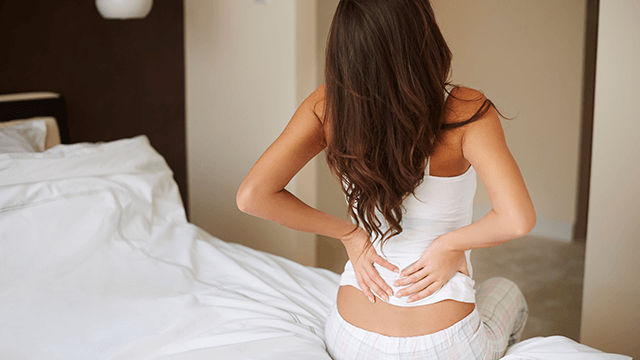Dry Needling Therapy
Table of Contents
1. Dry Needling Therapy Introduction
Dry needling therapy is one such method that has gained popularity. This approach has gained popularity due to its potential to treat a variety of musculoskeletal ailments and improve general well-being.
Dry needling therapy, also known as intramuscular stimulation, is a specialist treatment for muscular discomfort and dysfunction. Dry needling, as opposed to traditional acupuncture, which is based on ancient Chinese medicine, focuses on releasing myofascial trigger points, which are knots and tight places in muscles that can cause discomfort and restricted movement.

In this article, we’ll look at the science behind dry needling therapy, how it varies from acupuncture, the ailments it can help with, the process itself, safety concerns, and its effectiveness in pain management. We’ll also discuss its application in sports rehabilitation, the psychological benefits it provides, and how to locate a trained practitioner. In addition, we’ll go through what to expect during a dry needling session and how to include it into your wellness regimen.
Stay with us as we explore the possibilities of dry needling therapy, shedding light on its advantages and unique contribution to the field of alternative treatments.
2. Understanding the Science Behind Dry Needling Therapy
A interesting scientific premise underpins the success of dry needling therapy in relieving muscular discomfort and encouraging healing. This technique goes beyond the obvious, delving into the complex interaction of muscles, nerves, and the body’s natural response to stimuli.
The basic idea behind dry needling is that trigger points are hyperirritable sites within muscles that are connected with knots and tight bands. These trigger points can cause pain, muscle tension, and movement restrictions. The goal of dry needling is to target and deactivate these trigger sites, delivering relief and restoring healthy muscle function.

A qualified practitioner will place thin, sterilized needles directly into these trigger sites when doing dry needling. The insertion may create a brief period of mild discomfort, frequently described as a twitch or aching. This sensation indicates that the trigger point has been triggered successfully. It’s vital to highlight that, unlike acupuncture, where needles are precisely placed along energy meridians, dry needling uses Western medical concepts to target specific anatomical sites.
The magic of dry needling does not end with the insertion of the needle. When the needle is inserted, it causes what is known as a “micro-trauma.” This controlled micro-trauma triggers a chain reaction of physiological responses in the body. The area’s blood flow improves, supplying critical nutrients and oxygen required for tissue regeneration. The neurological system also plays a role, releasing endorphins, the body’s natural painkillers, and encouraging relaxation.
The release of endorphins serves a dual purpose. Not only do these neurotransmitters dampen pain signals, but they also contribute to an overall feeling of well-being. This is why many individuals report a sensation of relief and even euphoria during and after a dry needling session.
3. Dry Needling Therapy vs. Acupuncture
In the realm of alternative therapies, both dry needling and acupuncture are frequently mentioned for their potential to alleviate pain and promote well-being. While they may seem similar due to their use of thin needles, these two practices have distinct origins, philosophies, and applications. Let’s delve into the nuances that set dry needling therapy and acupuncture apart:
3.1. Dry Needling Therapy
Dry needling therapy, rooted in modern Western medicine, focuses on addressing muscular pain and dysfunction. It is primarily based on neuroanatomy and the understanding of trigger points – hyperirritable spots within muscles associated with knots and tight bands. The goal of dry needling is to release these trigger points, promoting muscle relaxation and improved function.
In dry needling, thin, sterile needles are inserted directly into trigger points within the muscles. The insertion of the needles creates a controlled “micro-trauma,” stimulating blood flow, promoting oxygen delivery, and triggering the body’s natural healing response.
Dry needling is commonly used to alleviate conditions such as myofascial pain syndrome, muscle spasms, tension headaches, and sports-related injuries. It is considered a musculoskeletal therapy aimed at targeting specific muscular issues.
3.2. Acupuncture
Acupuncture has ancient origins in traditional Chinese medicine. It is based on the concept of balancing the flow of energy, known as “qi,” through pathways called meridians. Acupuncturists believe that disruptions in the flow of qi can lead to various health issues. The goal of acupuncture is to restore the balance of energy within the body.
In acupuncture, needles are strategically inserted into specific points along meridians to restore the flow of energy and rebalance the body. The depth and placement of the needles vary based on the individual’s condition and the acupuncturist’s assessment.
Acupuncture is used to address a wide range of conditions, including pain, stress, digestive issues, and emotional well-being. It is considered a holistic therapy that aims to restore the body’s overall balance.
3.3. Key Differences between Dry Needling Therapy vs. Acupuncture
Philosophy: The fundamental difference lies in their philosophies. Dry needling is based on anatomical and neurophysiological principles, targeting trigger points within muscles. Acupuncture, on the other hand, is rooted in the concept of energy flow and meridians.
Goals: Dry needling aims to release trigger points and promote muscle relaxation. Acupuncture seeks to restore the balance of energy within the body.
Technique: Dry needling is more localized, targeting specific muscles and trigger points. Acupuncture involves the insertion of needles along energy meridians, often covering a broader range of points.
Scope: Dry needling primarily focuses on musculoskeletal issues. Acupuncture has a broader scope, addressing physical, emotional, and energetic imbalances.
Training: Practitioners of dry needling usually have a background in physical therapy, chiropractic care, or other related fields. Acupuncturists undergo specialized training in traditional Chinese medicine.
4. Conditions That Can Be Treated with Dry Needling
Dry needling therapy has garnered attention for its versatility in addressing a range of musculoskeletal conditions. From chronic pain to specific injuries, this innovative technique has shown promise in providing relief and enhancing overall well-being. Let’s explore some of the conditions that can be effectively treated with dry needling:
4.1. Myofascial Pain Syndrome (MPS)
One of the primary targets of dry needling is myofascial pain syndrome – a chronic condition characterized by trigger points in muscle tissue. By releasing these trigger points, dry needling can alleviate the pain, tension, and restricted movement associated with MPS.

4.2. Muscle Spasms
Muscle spasms can result from various factors, including overuse, injury, or underlying medical conditions. Dry needling can help relax the spasming muscles, reducing discomfort and promoting better muscle function.

4.3. Tension Headaches
Tension headaches often stem from muscle tension in the neck, shoulders, and upper back. Dry needling can effectively release the tight muscles, providing relief from tension headaches and preventing their recurrence.

4.4. Lower Back Pain
Chronic lower back pain is a common complaint that can significantly impact quality of life. Dry needling targets the trigger points in the lower back muscles, addressing the root cause of the pain and promoting a reduction in discomfort.

4.5. Sports-related Injuries
Athletes frequently turn to dry needling to address sports-related injuries such as muscle strains, ligament sprains, and overuse injuries. By targeting the affected muscles, dry needling aids in the healing process and accelerates recovery.

4.6. Fibromyalgia
Fibromyalgia is a complex condition characterized by widespread pain and tender points. Dry needling can provide relief by releasing tension in the muscles and promoting relaxation, contributing to overall pain reduction.

4.7. Postural Issues
Poor posture can lead to muscle imbalances and discomfort. Dry needling can help address these imbalances by releasing tension in overactive muscles and promoting better alignment.

4.8. Repetitive Strain Injuries
Repetitive strain injuries often result from prolonged repetitive motions. Dry needling can target the affected muscles, alleviating pain and improving function in these overused areas.

4.9. Joint Pain
Muscles and joints are closely interconnected. Dry needling not only addresses muscle-related pain but can also have a positive impact on joint pain by promoting better muscle function and reducing tension.

4.10. Dry Needling Therapy for Sciatica pain
Sciatica, characterized by pain radiating down the leg, can be caused by muscle tension and pressure on the sciatic nerve. Dry needling can help release the muscles contributing to this pressure, providing relief from sciatic pain.

5. Dry Needling Therapy Process
Embarking on a journey towards pain relief and improved well-being through dry needling therapy involves a step-by-step process that’s both intriguing and effective. Let’s dive into the stages of this therapy to understand what you can expect during your sessions.
5.1. Assessment: Identifying the Trigger Points
The journey begins with a comprehensive assessment by a trained practitioner. This step is crucial to pinpoint the trigger points – those areas of tension and discomfort within your muscles. The practitioner will discuss your medical history, understand your symptoms, and conduct a physical examination to create a tailored treatment plan.
5.2. Needle Insertion: Targeting the Trigger Points
Once the trigger points are identified, the practitioner will use thin, sterile needles to target these specific areas. The insertion of the needles might cause a brief sensation – often described as a twitch or a slight ache. This indicates that the trigger point has been successfully stimulated.
5.3. Micro-trauma and Response
As the needles are inserted, they create a controlled “micro-trauma.” This action prompts your body’s natural healing mechanisms into action. Blood flow to the area increases, delivering nutrients and oxygen necessary for tissue repair. Additionally, the nervous system releases endorphins – your body’s natural pain relievers – promoting relaxation and a sense of well-being.
5.4. Muscle Reset and Relaxation
The mechanical action of the needles can help release muscle knots and bands, leading to improved muscle flexibility and range of motion. The muscles essentially “reset,” releasing tension and allowing for smoother movement.
5.5. Post-Session Sensation
After the session, it’s common to experience mild soreness or a sensation similar to post-workout muscle soreness. This discomfort is temporary and is often followed by a sense of relief and improved mobility.
5.6. Integration and Wellness Plan
Dry needling isn’t a one-size-fits-all solution. A skilled practitioner, like Dr. Kiran, will work with you to integrate dry needling into a comprehensive wellness plan. This might include lifestyle adjustments, exercises, and self-care practices to enhance the benefits of the therapy.
5.7. Ongoing Sessions and Progress
Depending on your individual needs, you might require multiple dry needling sessions. These sessions are spaced according to your progress and response to treatment. The practitioner will continuously assess your condition and adjust the treatment plan as needed.
5.8. Empowerment Through Education
Throughout the process, patient education is emphasized. A knowledgeable patient is an empowered one. Your practitioner will explain the science behind dry needling, the sensations you might experience, and how the therapy contributes to your overall healing.
5.9. Long-term Benefits
With each session, you’ll likely notice a reduction in pain, improved muscle function, and an enhanced sense of well-being. As you progress through your dry needling therapy, the benefits can extend beyond the physical realm, positively impacting your overall quality of life.
6. Dry Needling Trigger Point Chart
In the realm of dry needling therapy, understanding trigger points and their corresponding areas is crucial. Trigger points are hyperirritable spots within muscles that can cause pain, discomfort, and restricted movement. Here’s a comprehensive chart highlighting some common trigger points and their associated symptoms:
| Muscle Group | Common Trigger Points | Associated Symptoms |
|---|---|---|
| Neck and Shoulders | Upper Trapezius | Neck pain, tension headaches |
| Levator Scapulae | Shoulder pain, limited neck movement | |
| Suboccipitals | Headaches, neck stiffness | |
| Back and Spine | Erector Spinae | Lower back pain, stiffness |
| Quadratus Lumborum | Lower back pain, hip discomfort | |
| Latissimus Dorsi | Upper back pain, shoulder discomfort | |
| Upper Limb | Supraspinatus | Shoulder pain, limited arm movement |
| Extensor Carpi Radialis | Wrist pain, tennis elbow | |
| Pronator Teres | Forearm pain, weakness in grip | |
| Lower Limb | Gluteus Medius | Hip pain, sciatic-like symptoms |
| Quadriceps | Knee pain, tightness in thigh muscles | |
| Gastrocnemius | Calf pain, plantar fasciitis |
7. Benefits of Dry Needling Therapy
Dry needling therapy has gained recognition for its remarkable ability to provide relief from various musculoskeletal issues and promote overall wellness. This innovative approach, rooted in modern medical understanding, offers a range of benefits that make it a sought-after choice for those seeking pain relief and improved muscle function. Let’s explore the key advantages of dry needling therapy:
Dry needling specifically targets trigger points – those knots and tension areas within muscles that contribute to pain and discomfort. By releasing these trigger points, dry needling provides localized pain relief, allowing individuals to experience increased comfort and improved mobility.
The insertion of thin needles into trigger points prompts muscle relaxation. This relaxation not only reduces pain but also contributes to enhanced flexibility and range of motion. Relaxed muscles function more efficiently, reducing the risk of further strain or injury.
Dry needling stimulates blood flow to the treated areas. Increased blood circulation delivers vital nutrients and oxygen to the muscles, supporting tissue repair and promoting healing. This can be particularly beneficial for individuals recovering from injuries.
The process of dry needling triggers the release of endorphins – the body’s natural painkillers and mood enhancers. This release not only alleviates pain but also creates a sense of relaxation and well-being, contributing to an overall improved state of mind.
Dry needling can be seamlessly integrated into a comprehensive treatment plan. Whether used alongside physical therapy, chiropractic care, or other interventions, dry needling enhances the effectiveness of other therapies and accelerates the healing process.
Each dry needling session is personalized based on the individual’s condition and trigger points. This tailored approach ensures that the therapy addresses specific concerns and provides optimal results.
The thin, sterile needles used in dry needling therapy are minimally invasive. This means that discomfort during the procedure is generally brief, and the risk of complications is low when performed by a trained practitioner.
For athletes and individuals recovering from sports-related injuries, dry needling can expedite the healing process. It reduces muscle imbalances, aids in recovery, and helps athletes return to their activities sooner.
Dry needling doesn’t just focus on symptoms; it addresses underlying issues within the muscles. This holistic approach not only provides relief but also works to prevent the recurrence of pain and discomfort.
By reducing pain, improving mobility, and promoting relaxation, dry needling therapy contributes to an enhanced quality of life. Individuals can engage in daily activities with greater ease and enjoy an improved overall sense of well-being.
8. Side Effects of Dry Needling Therapy
While dry needling therapy is generally safe and well-tolerated, it’s important to be aware of potential side effects that some individuals might experience. These side effects are usually mild and temporary, and they often resolve on their own. Let’s explore some of the possible reactions that can occur after a dry needling session:
It’s common to experience mild soreness at the sites where the needles were inserted. This soreness is usually similar to post-workout muscle soreness and typically subsides within a day or two.
Some individuals might notice minor bruising at the needle insertion sites. This is a normal response and is usually not a cause for concern. The bruising tends to fade within a few days.
During the needling process, you might experience muscle twitching or a brief muscle contraction. This is often a positive sign that the trigger point has been successfully stimulated.
In some cases, individuals might experience a temporary increase in pain after a dry needling session. This is known as “post-needling soreness” and is usually short-lived.
After a session, some individuals might feel slightly fatigued or lightheaded. This can be due to the release of endorphins during the therapy.
Dry needling can sometimes trigger emotional responses. It’s not uncommon for individuals to feel emotional during or after a session. This emotional release is a natural part of the body’s response to the therapy.
While the insertion of the needles is generally well-tolerated, some individuals might experience brief discomfort or a sensation of pressure during the process.
Minimal bleeding might occur at the needle insertion sites. This is usually very minor and stops quickly.
Occasionally, there might be slight localized swelling around the needle insertion points. This is usually mild and resolves on its own.
Although extremely rare, some individuals might have a mild allergic reaction to the materials in the needles. If you have a history of allergies, it’s important to inform your practitioner beforehand.
9. Dr. Iqra Kiran Approach to Dry Needling Therapy
Dr. Iqra Kiran’s approach to dry needling therapy reflects her dedication to providing individualized care and achieving the best possible outcomes for her patients. Let’s delve deeper into each aspect of her approach:
9.1 Thorough Assessment: When you begin dry needling therapy with Dr. Kiran, the journey starts with a comprehensive assessment. This phase involves a meticulous evaluation of your musculoskeletal condition. Dr. Kiran identifies specific trigger points within your muscles – those areas that are causing pain, discomfort, or restricted movement. This step is crucial as it lays the foundation for a targeted and effective treatment plan.
9.2 Precise Needle Insertion: As the therapy session commences, Dr. Kiran’s expertise shines through in the precise insertion of fine needles into the identified trigger points. Her skill and experience ensure that the needles are placed accurately and with utmost care. This precision minimizes any potential discomfort, making the procedure as comfortable as possible for you.
9.3 Monitoring Muscle Response: Dr. Kiran’s commitment to your well-being extends beyond needle insertion. As the therapy progresses, she closely monitors how your muscles respond to the treatment. The insertion of needles stimulates the trigger points, often leading to muscle twitch responses. Dr. Kiran observes these responses to gauge the therapy’s effectiveness. If needed, she can make real-time adjustments to optimize the outcomes.
9.4 Post-Treatment Guidance: After the therapy session concludes, Dr. Kiran’s support doesn’t end there. She provides valuable guidance on how to manage any post-treatment soreness that might arise. Her insights help you navigate the immediate aftermath of the therapy with confidence. Furthermore, Dr. Kiran imparts knowledge on how to maximize and extend the benefits of the treatment in the days and weeks following the session.
Dr. Iqra Kiran’s approach ensures that you receive a holistic and tailored experience throughout your dry needling therapy journey. Her attention to detail, personalized care, and continuous support set the stage for a transformative and effective treatment that addresses your unique needs and promotes your overall well-being.
10. Conclusion
The versatility of dry needling therapy makes it a valuable option for a wide range of conditions affecting the musculoskeletal system. By targeting trigger points and promoting muscle relaxation, this technique offers a non-invasive and effective approach to pain relief, improved mobility, and overall well-being. Whether you’re dealing with chronic pain or recovering from an injury, dry needling could be the solution you’ve been seeking. As always, consult with a qualified practitioner to determine if this therapy is suitable for your specific condition.
11. FAQs (Frequently Ask Questions)
Is dry needling painful?
Dry needling involves inserting thin needles, which might cause slight discomfort during insertion. However, any discomfort is typically short-lived and followed by relief.
How many sessions are usually needed?
The number of sessions varies depending on the individual and the condition being treated. Some individuals experience relief after just a few sessions, while others might require more.
Can dry needling help with tension headaches?
Yes, dry needling can be effective in relieving tension headaches by targeting trigger points in the neck and shoulder muscles.
Are there any side effects of dry needling?
Side effects are usually mild and can include temporary soreness, bruising, or slight bleeding at the needle insertion sites.
Is dry needling safe?
According to Dr. Kiran, dry needling is safe when performed by a trained professional. Minor bruising or soreness might occur, but serious risks are rare.
How many sessions are recommended?
Dr. Iqra Kiran suggests that the number of sessions depends on your condition. Some experience relief in a few sessions, while others might need more to achieve optimal results.
Can anyone undergo this therapy?
Dr. Kiran advises that a consultation with a healthcare professional is crucial, especially if you have underlying medical conditions.
Are the results long-lasting?
Dr. Iqra Kiran shares that many individuals experience long-lasting relief. Maintenance sessions might be recommended for sustained benefits.
Is Dry needling therapy illegal?
The legality of dry needling therapy varies based on the jurisdiction and the healthcare regulations in place. In many regions, dry needling therapy is a recognized and legitimate treatment technique performed by licensed healthcare professionals such as physical therapists, chiropractors, and medical doctors who have undergone specific training and certification.
Feel the change
Book an Appointment
Say goodbye to long wait times and book your online physiotherapy appointment today! Get the care you need, when you need it, with our experienced physiotherapist. Click below to schedule your appointment and feel the change!